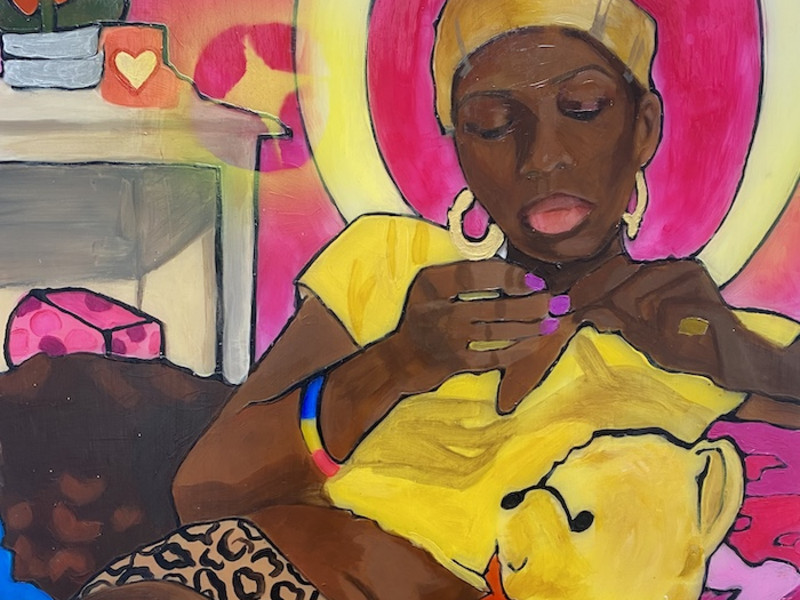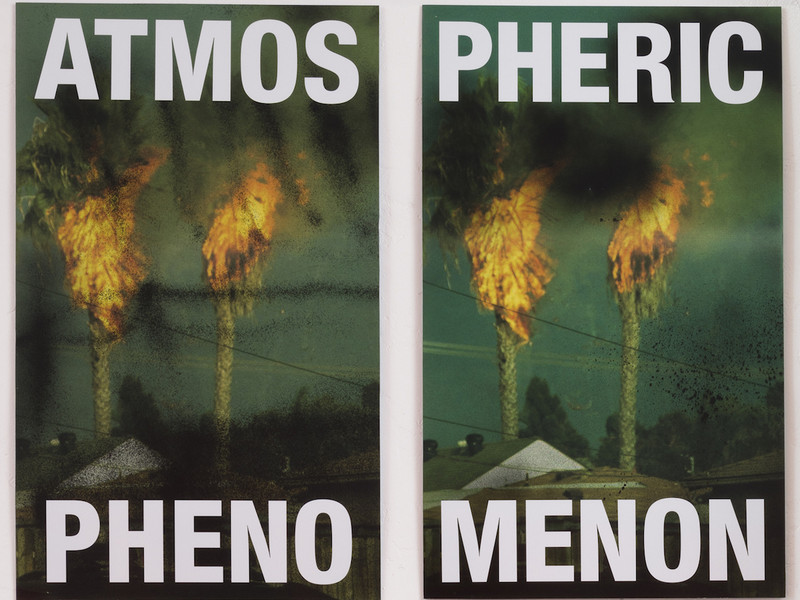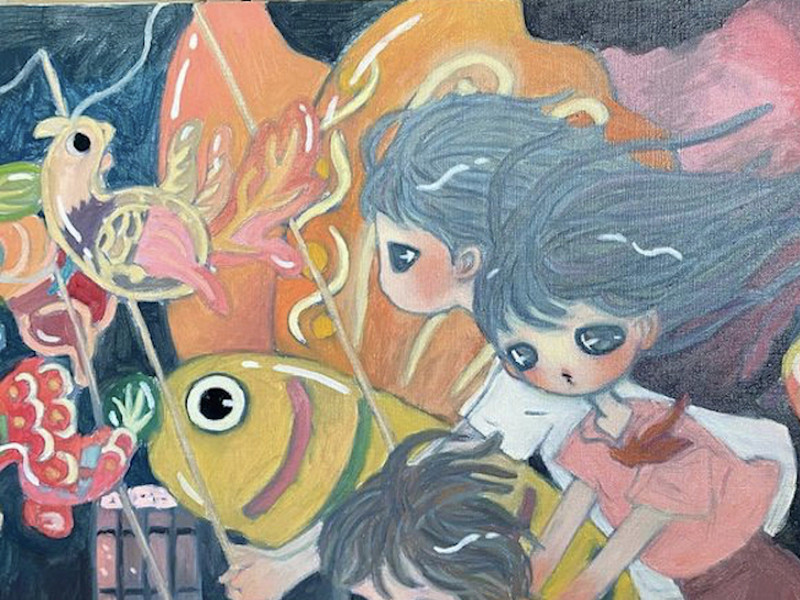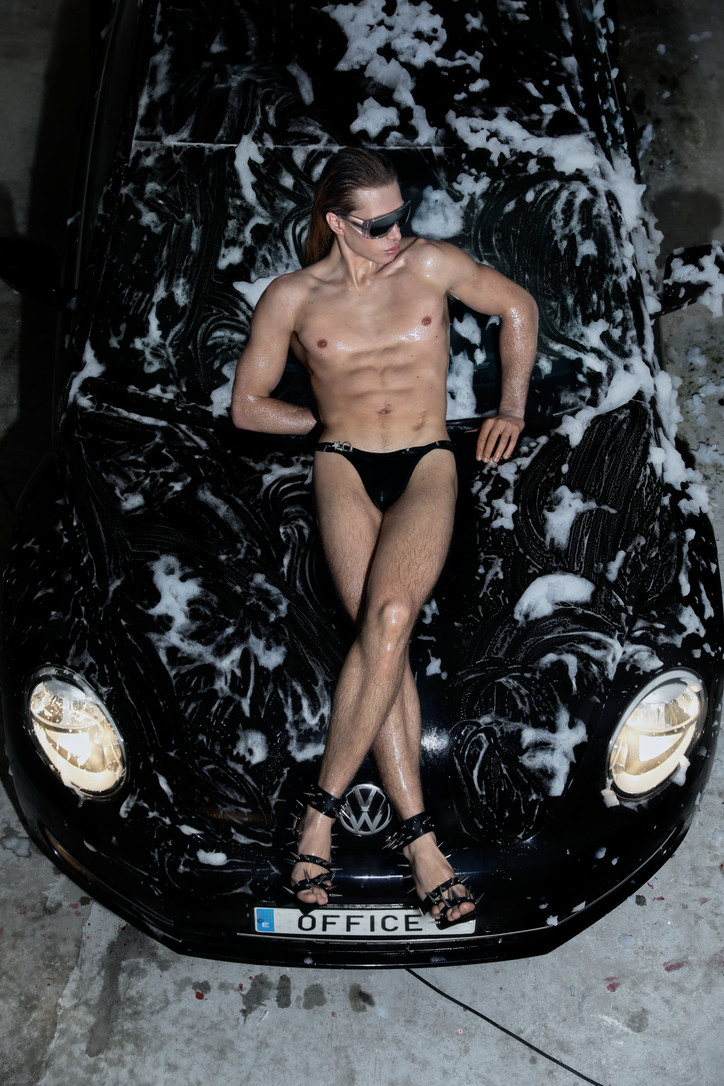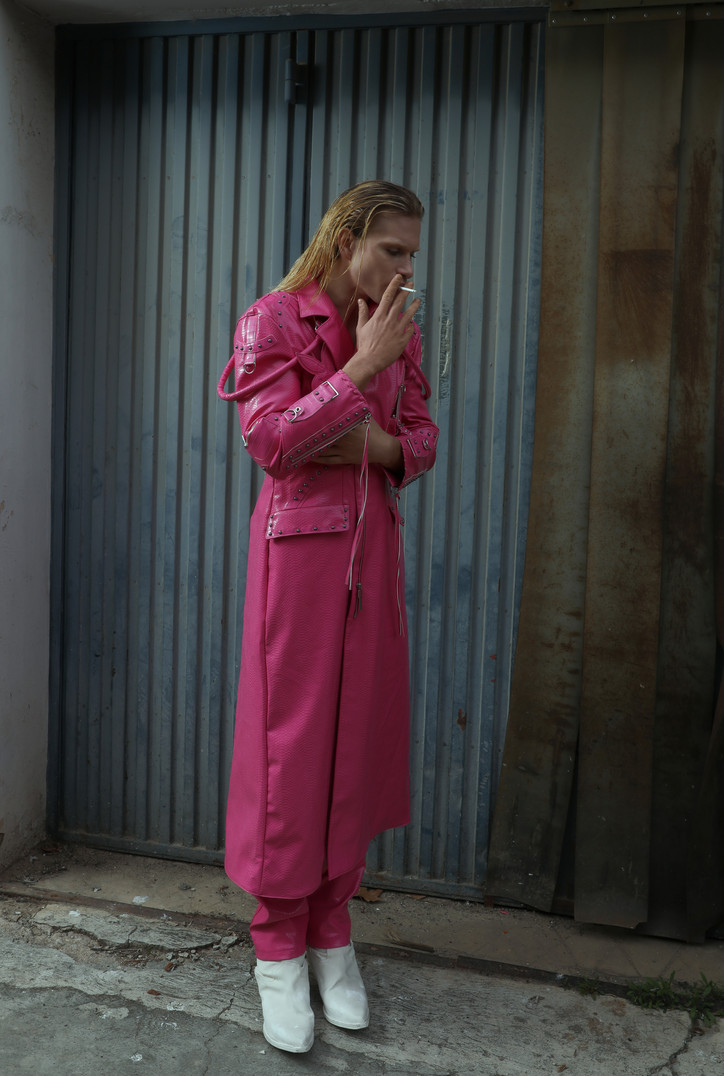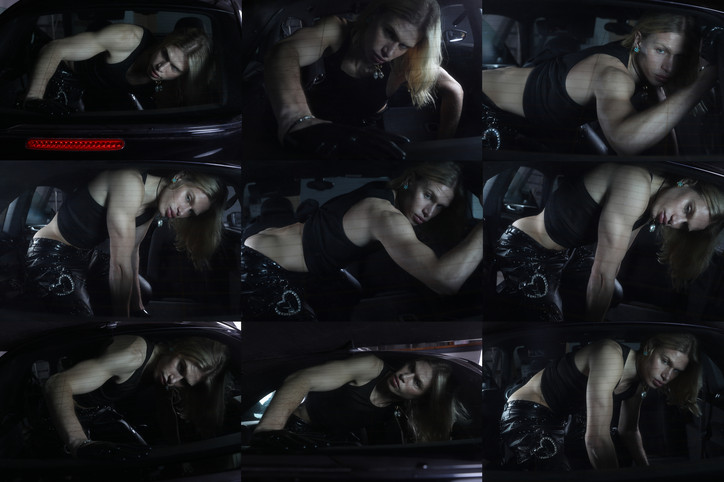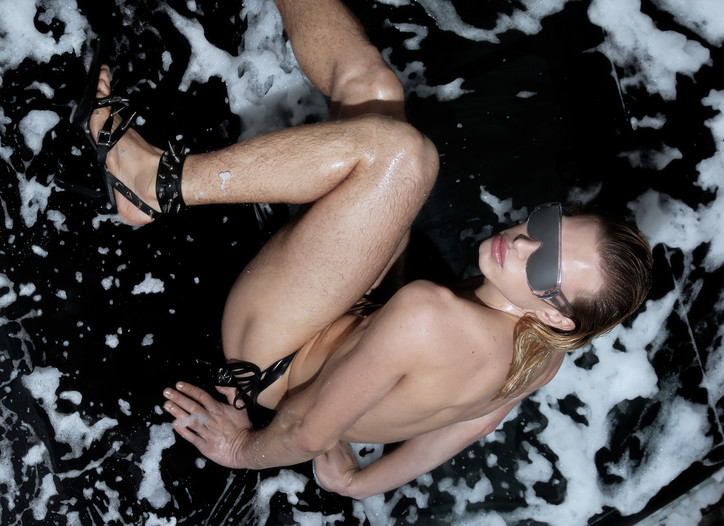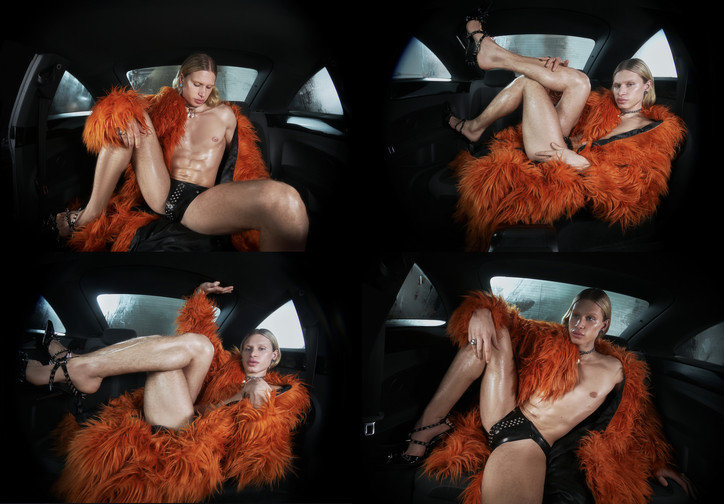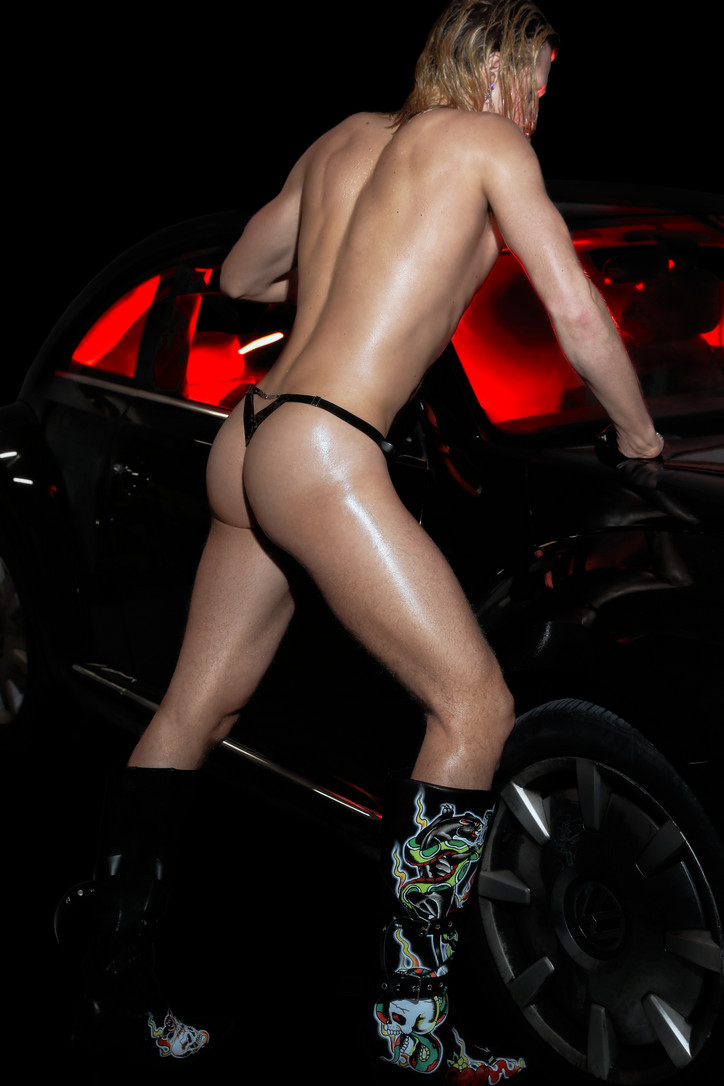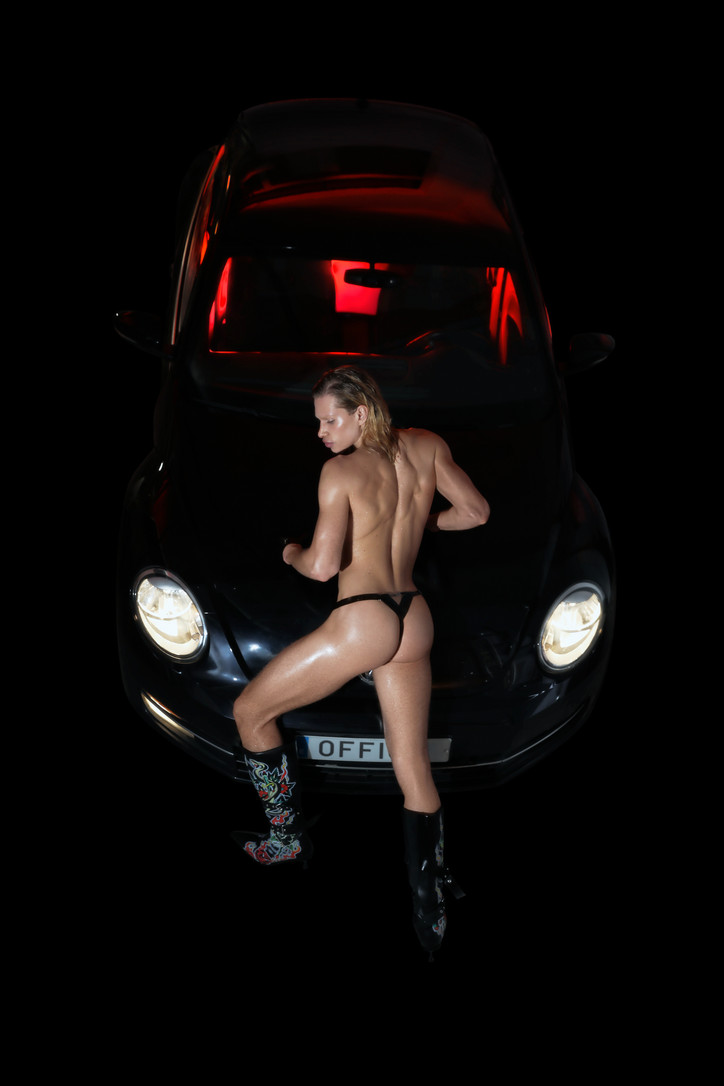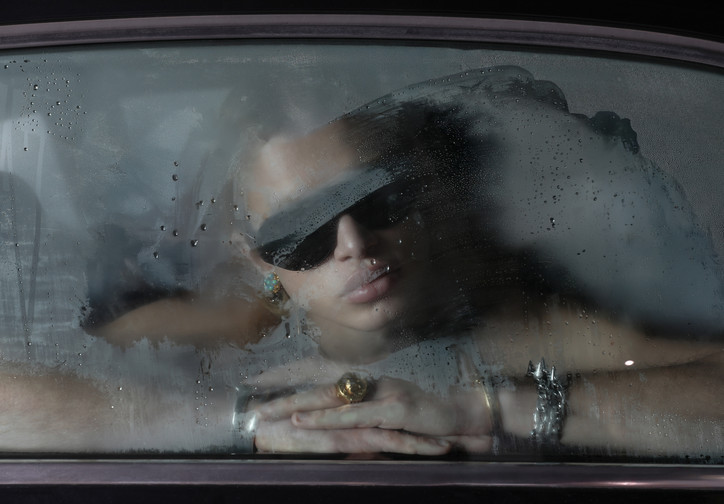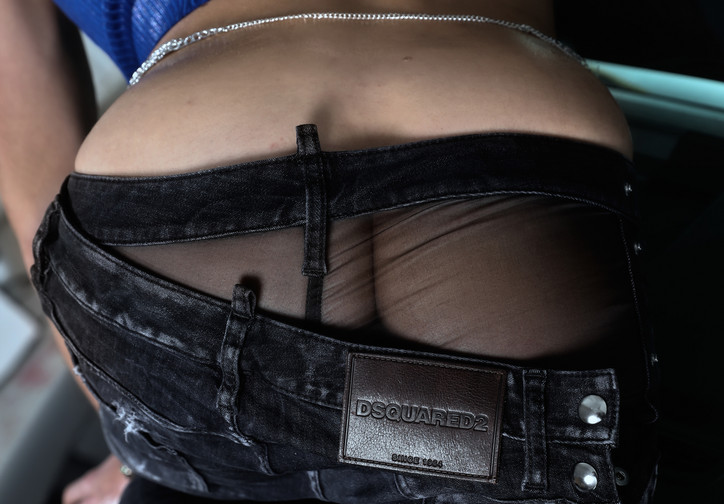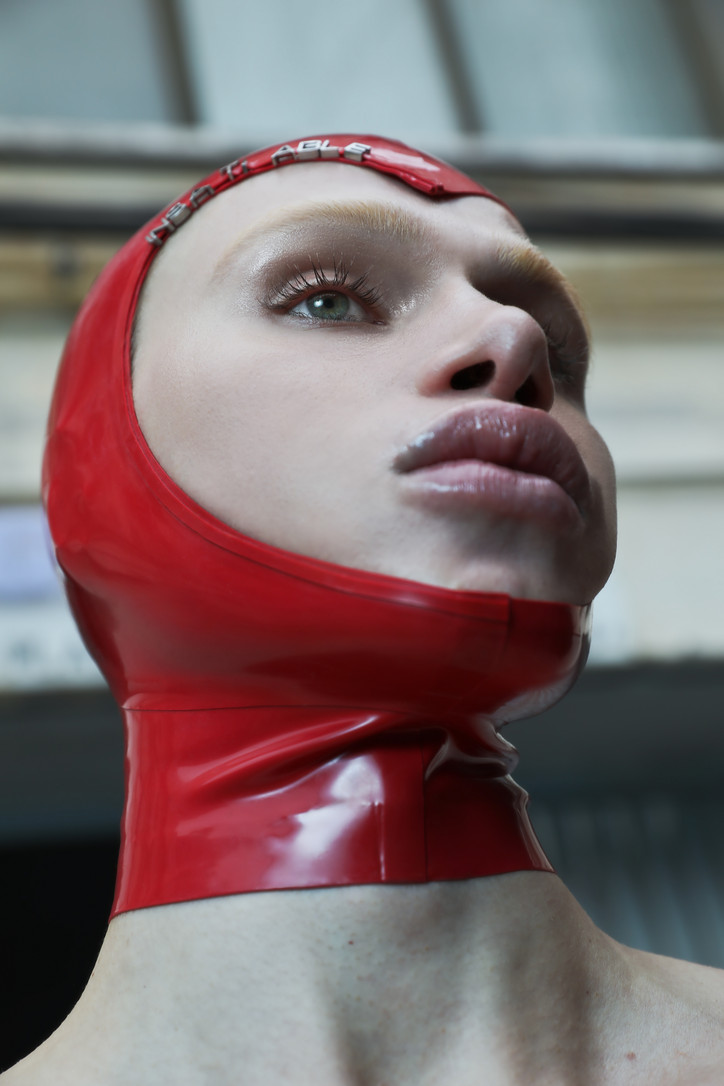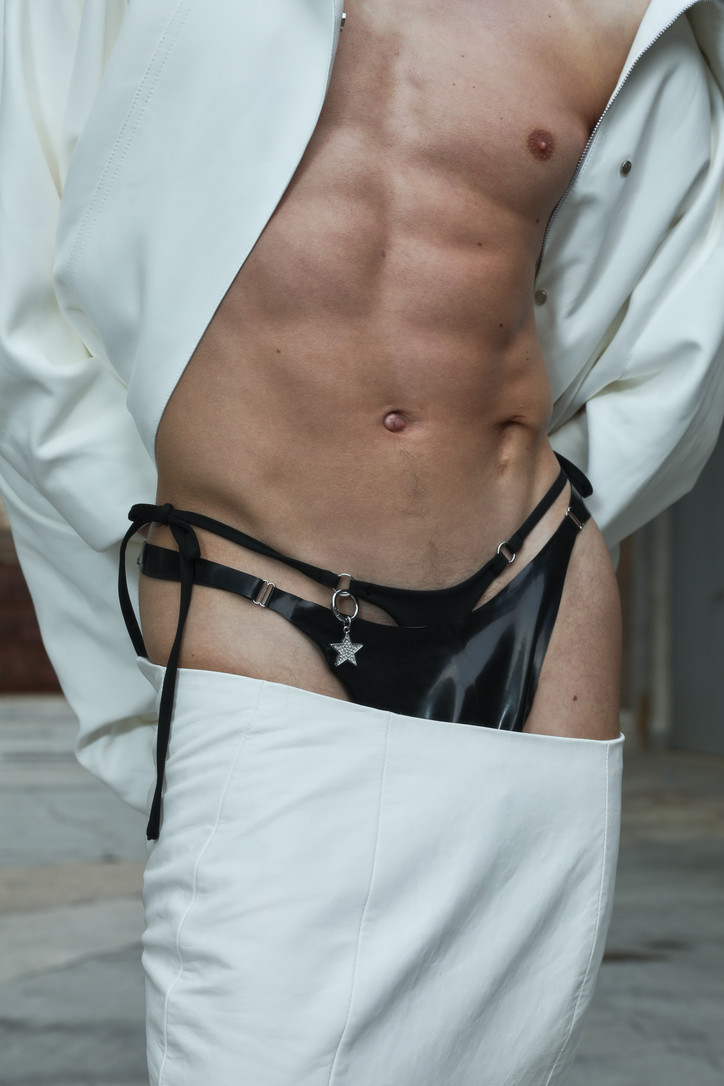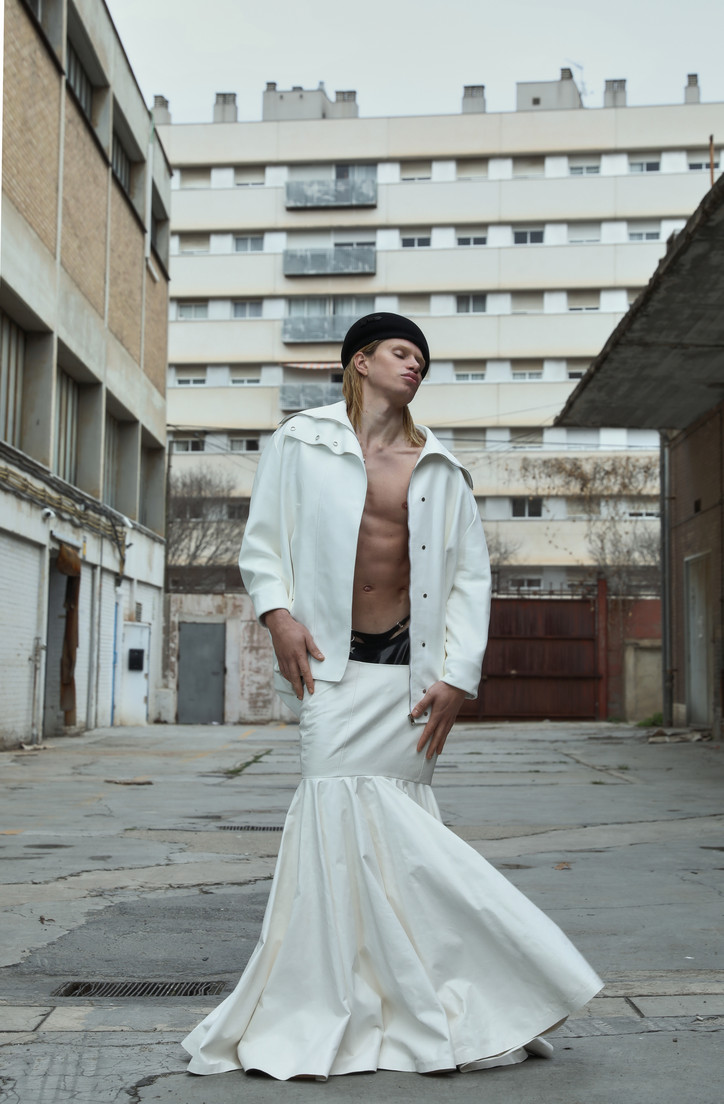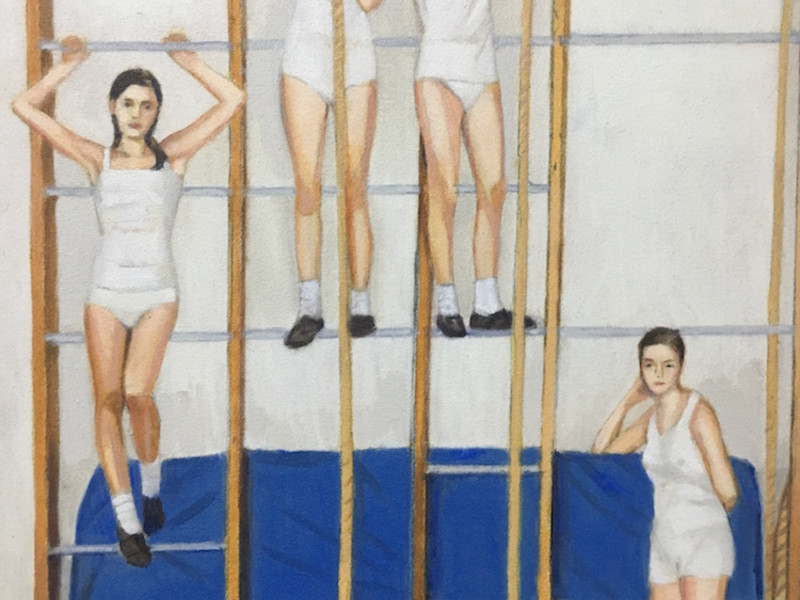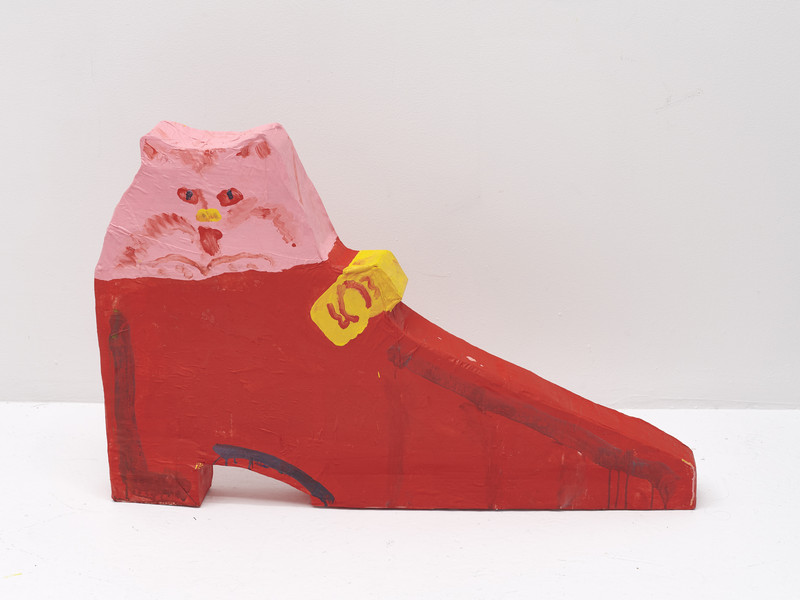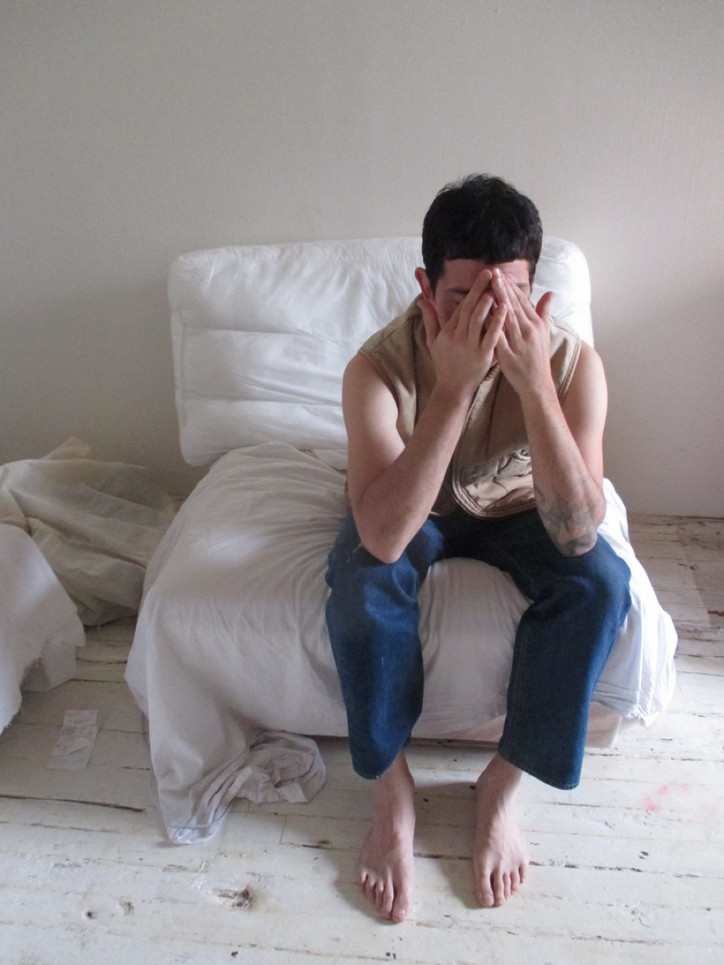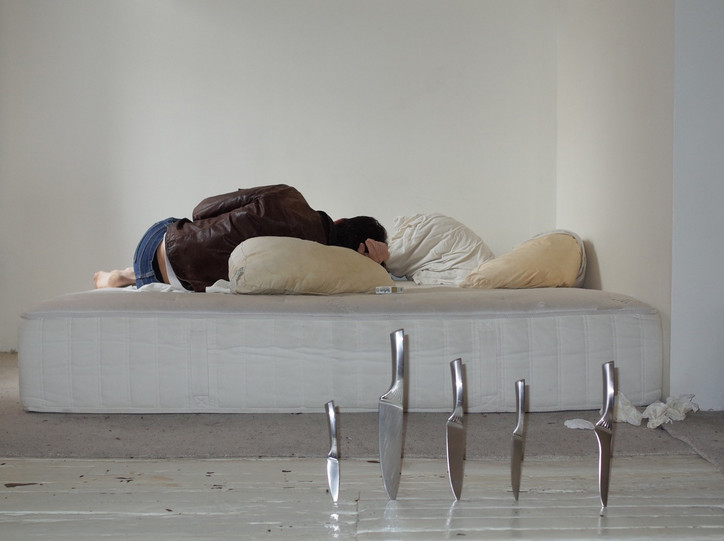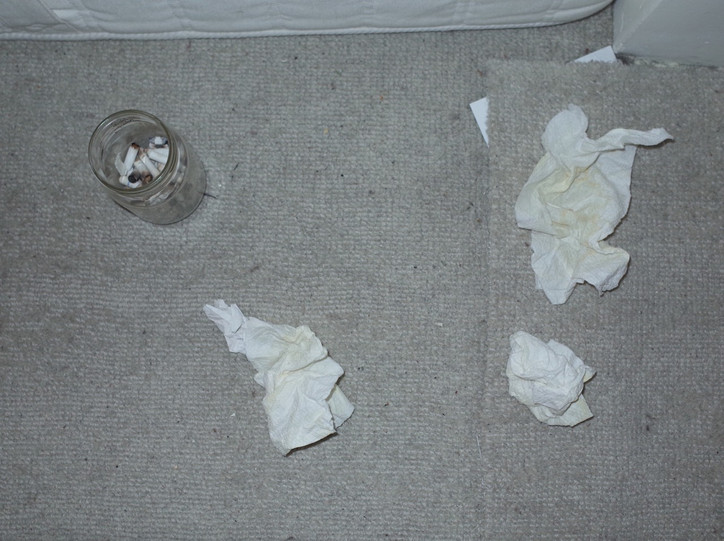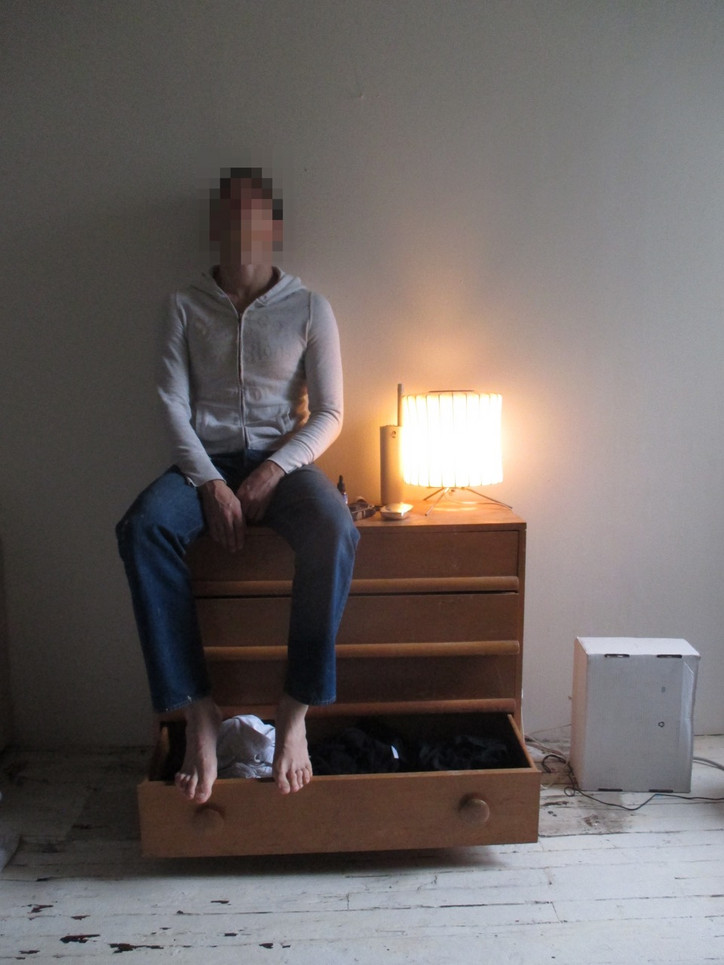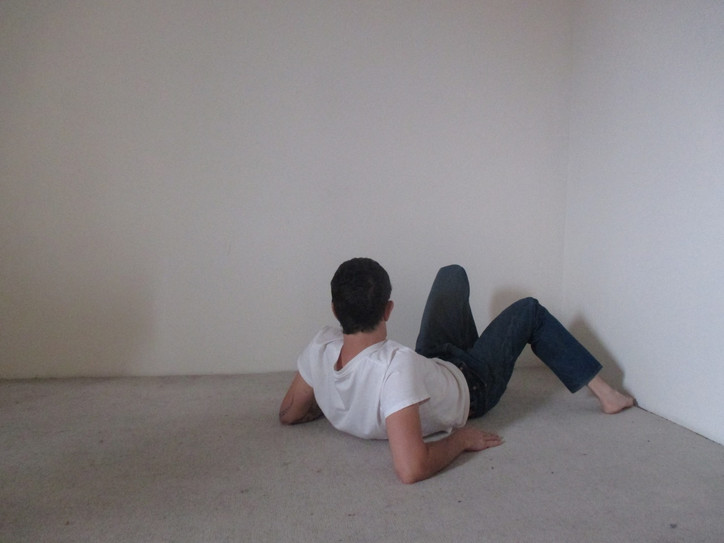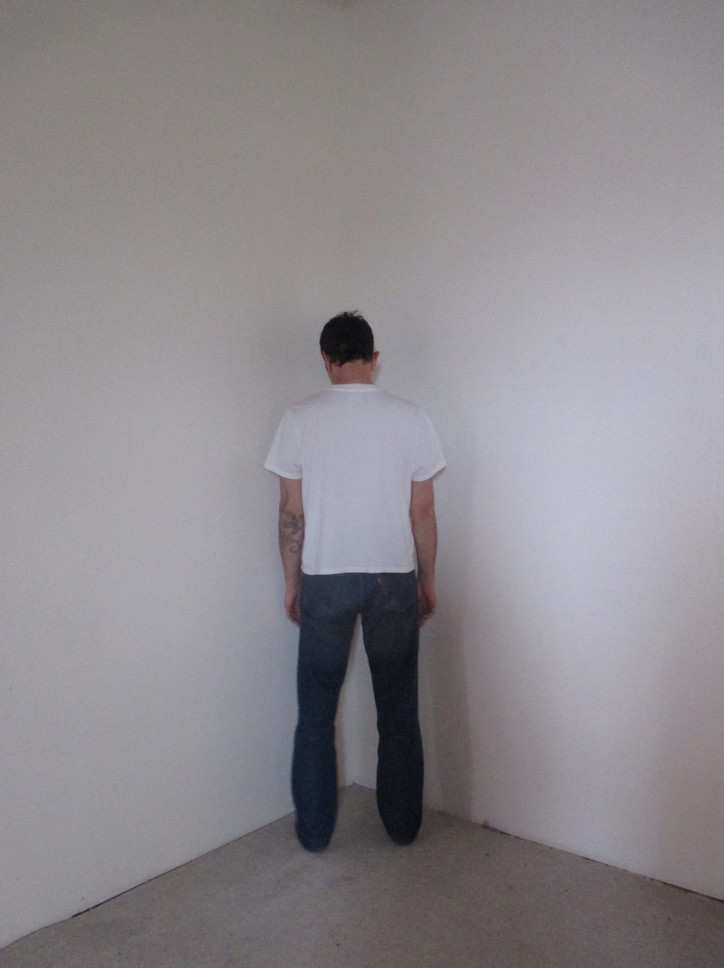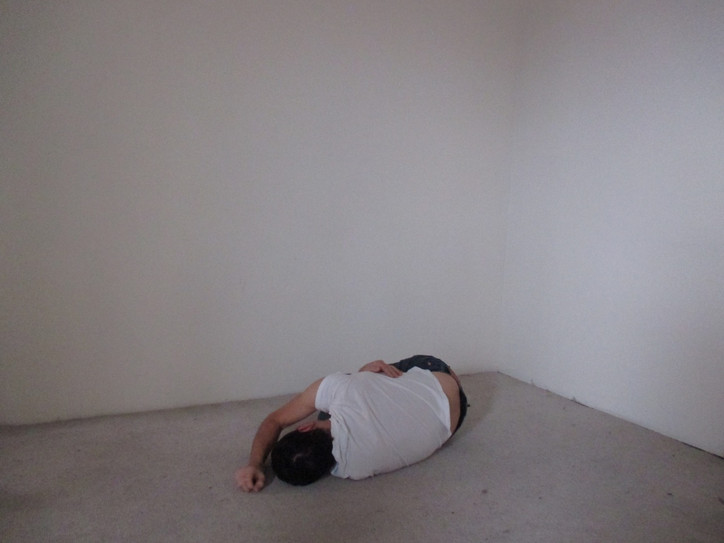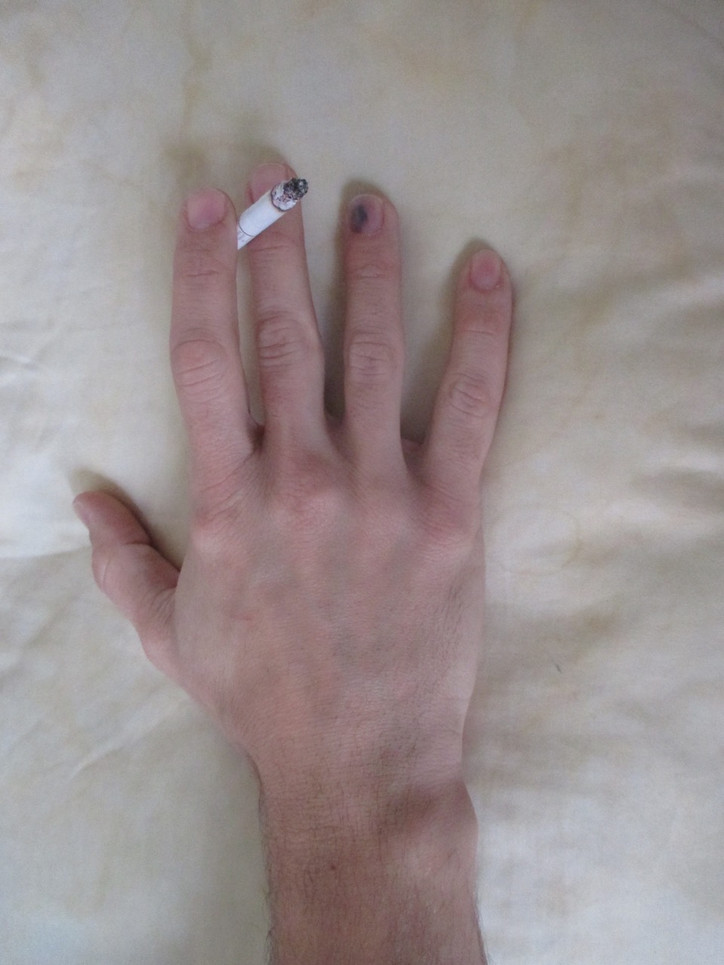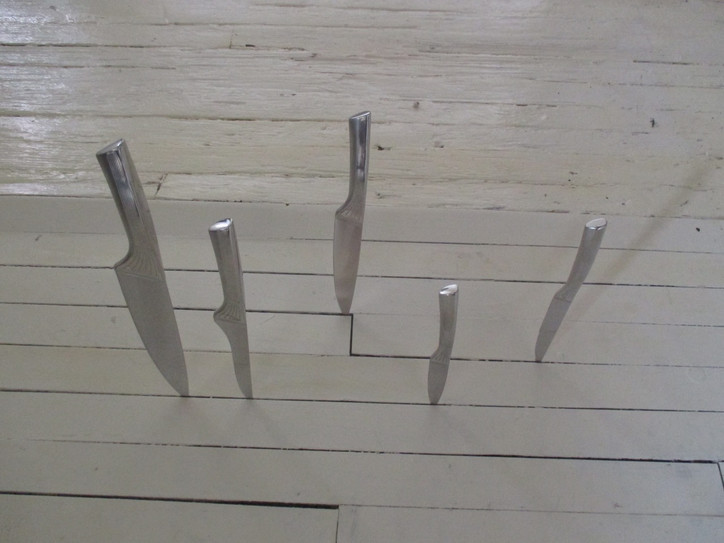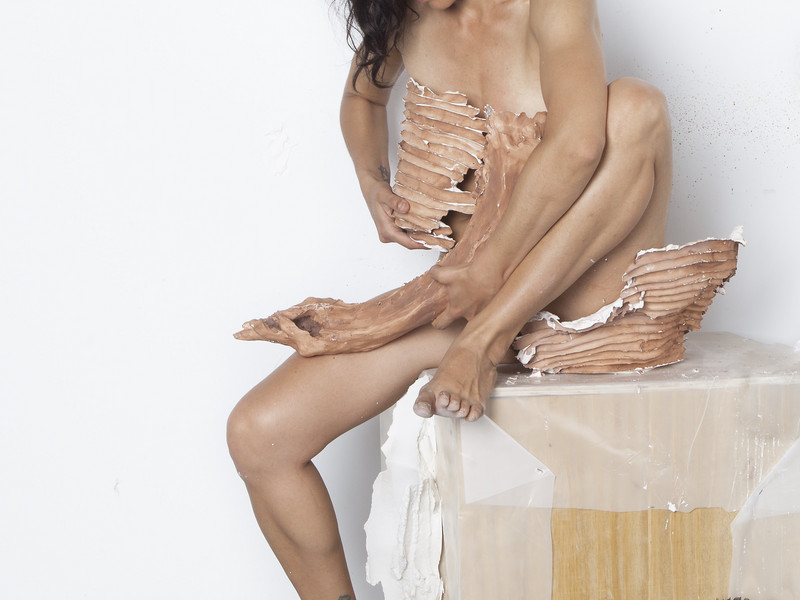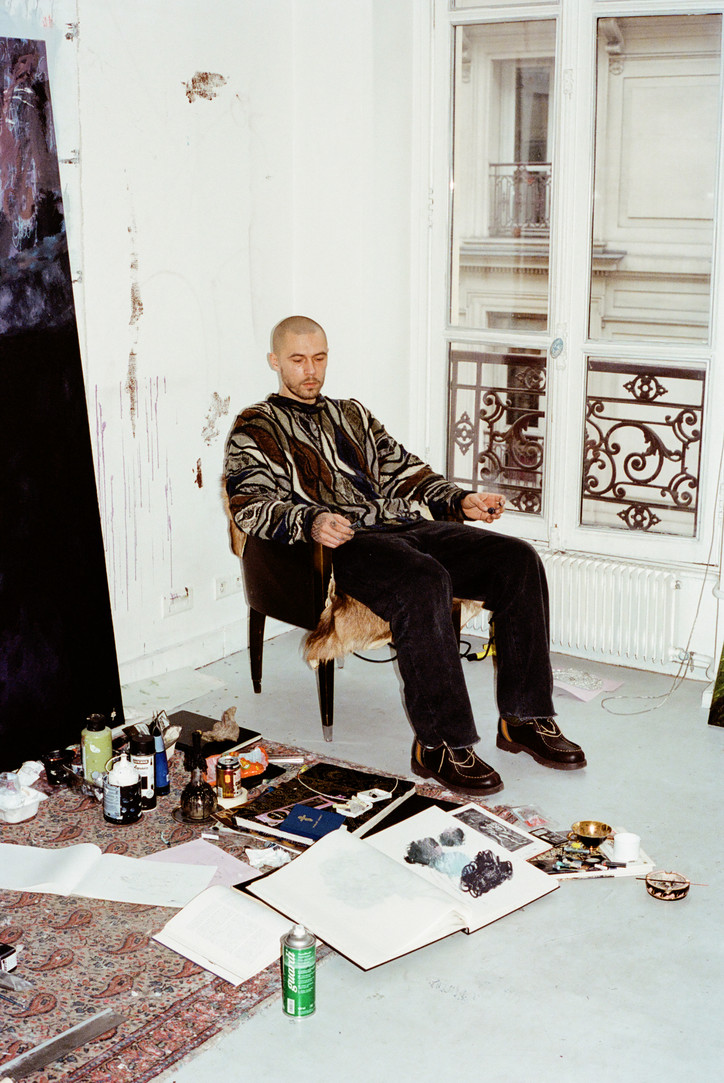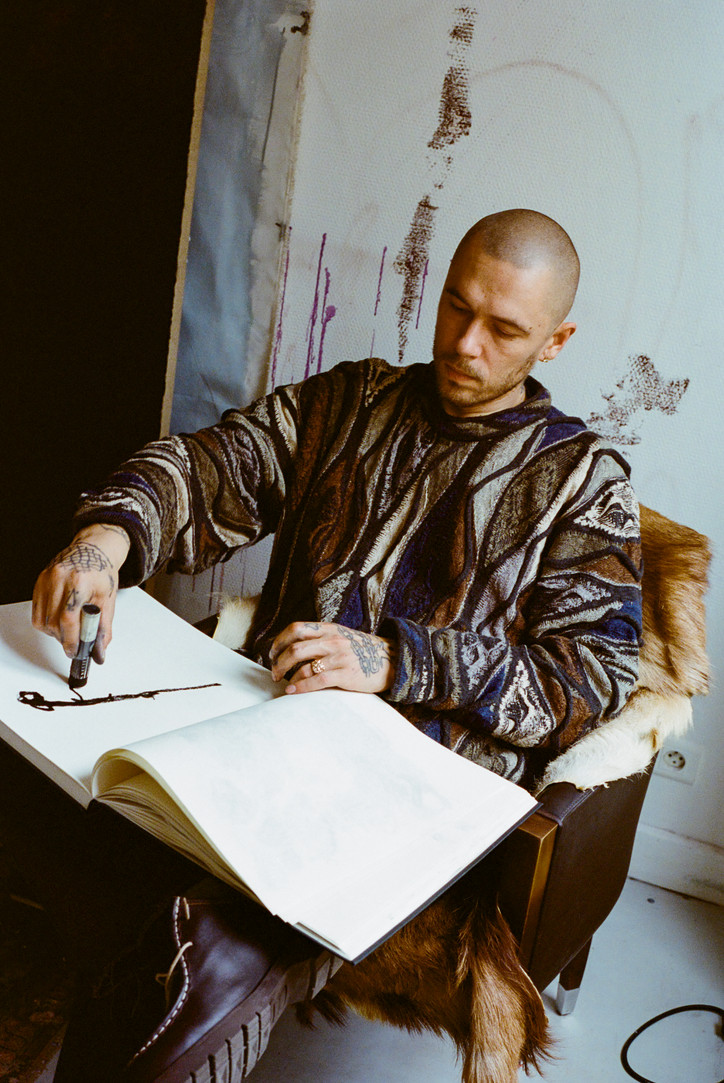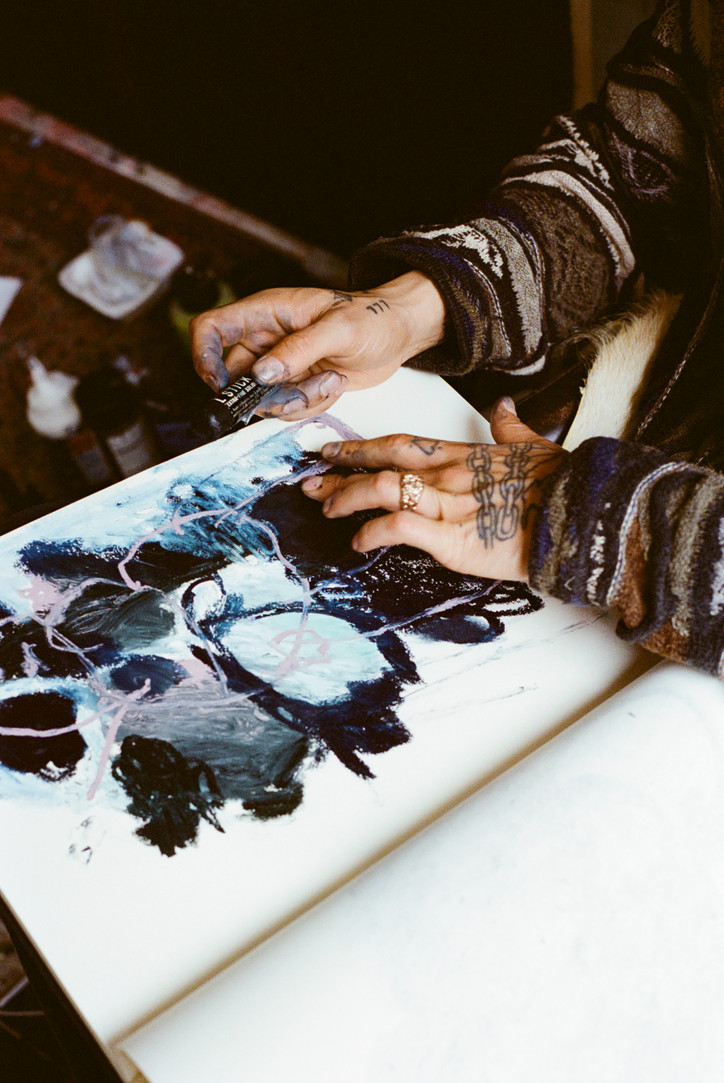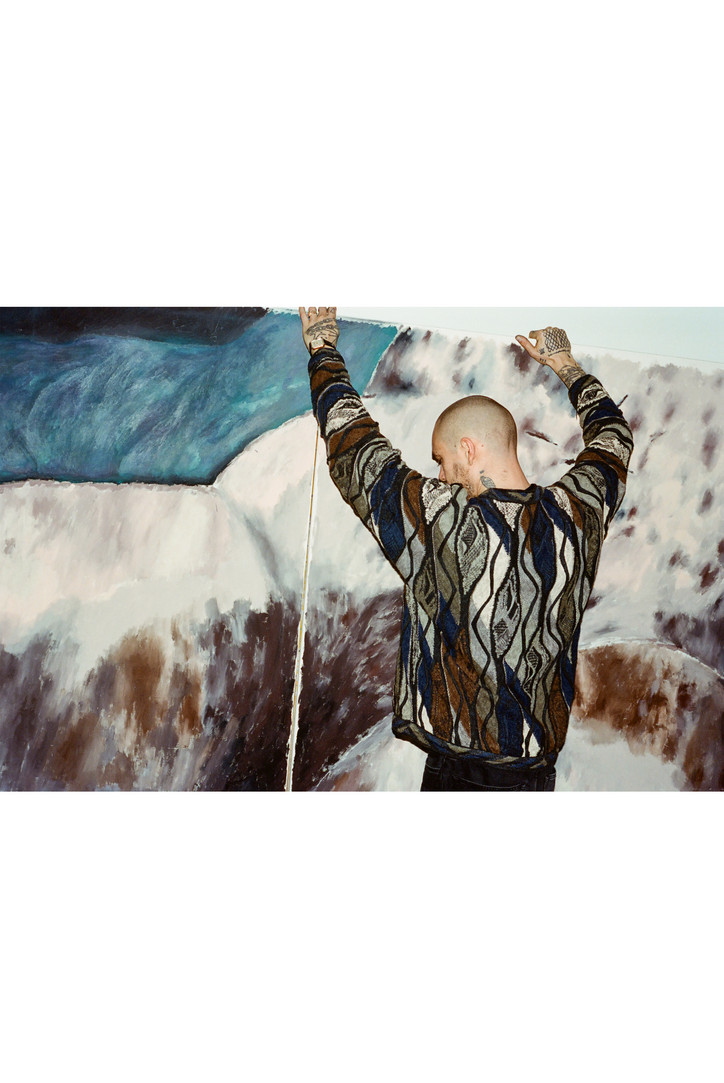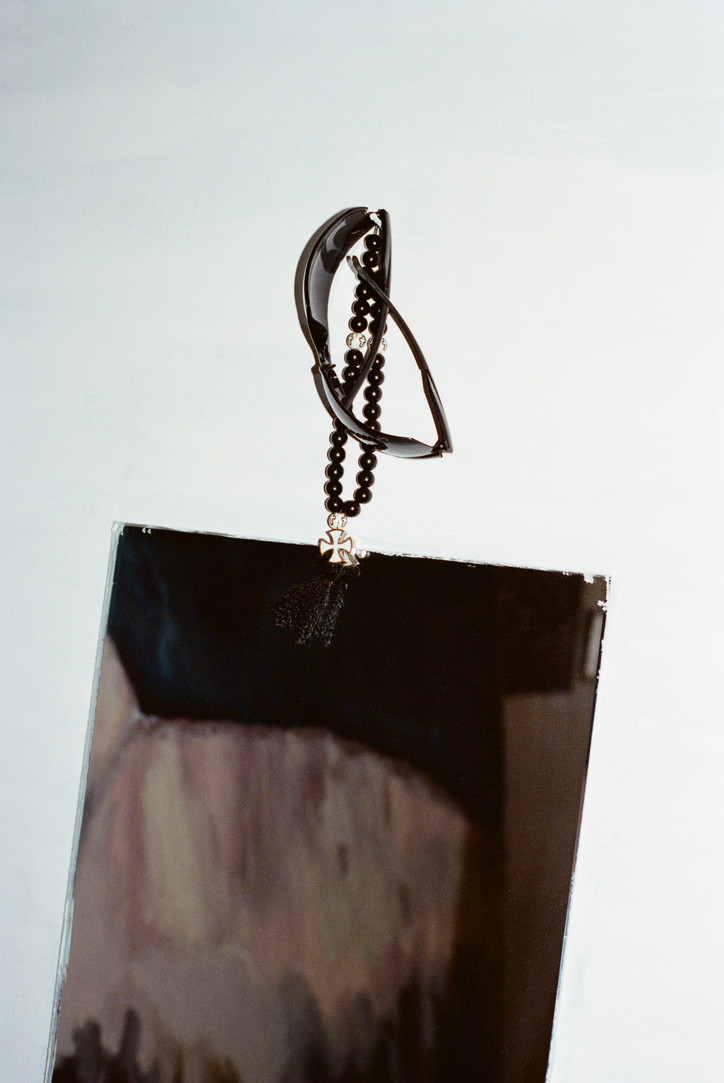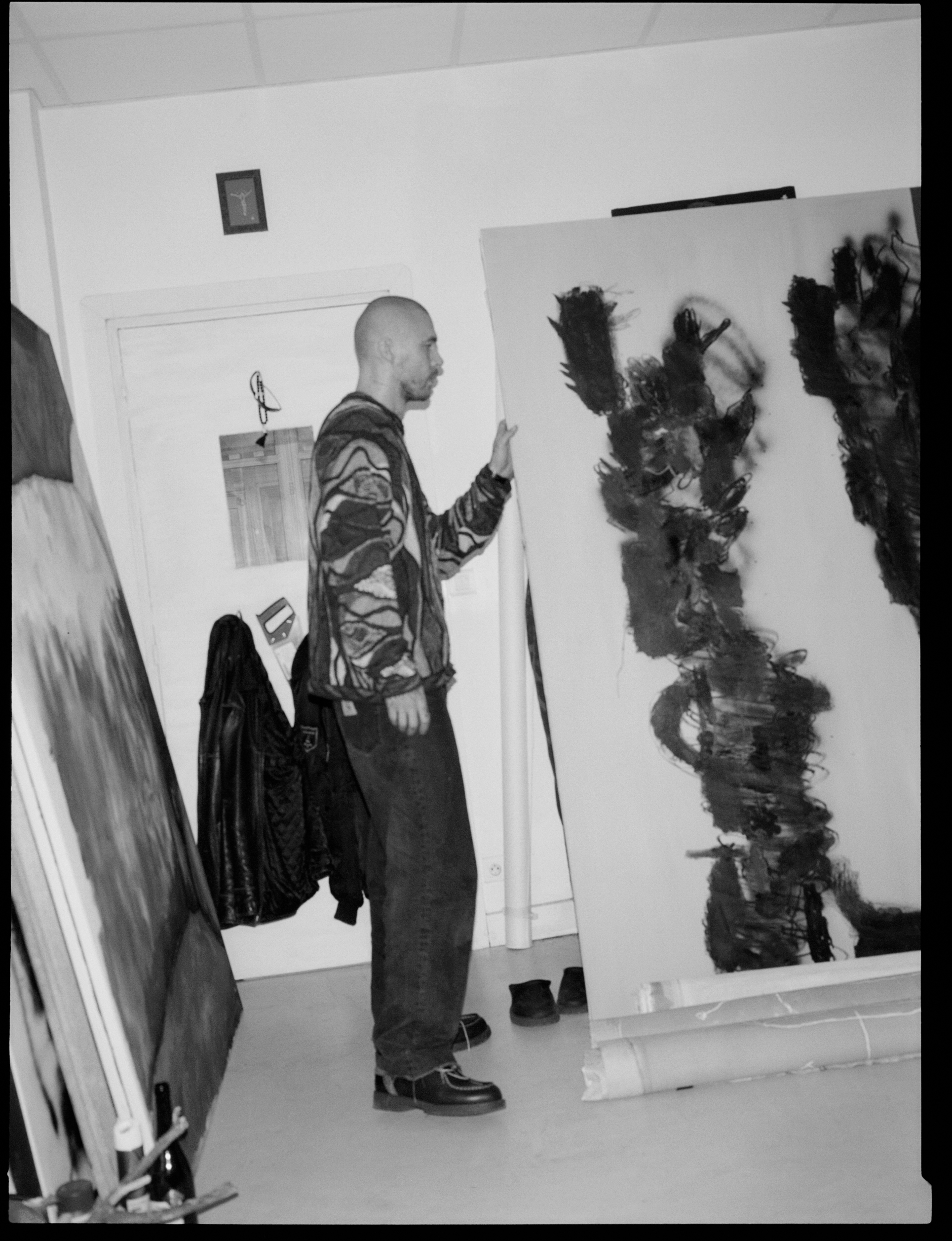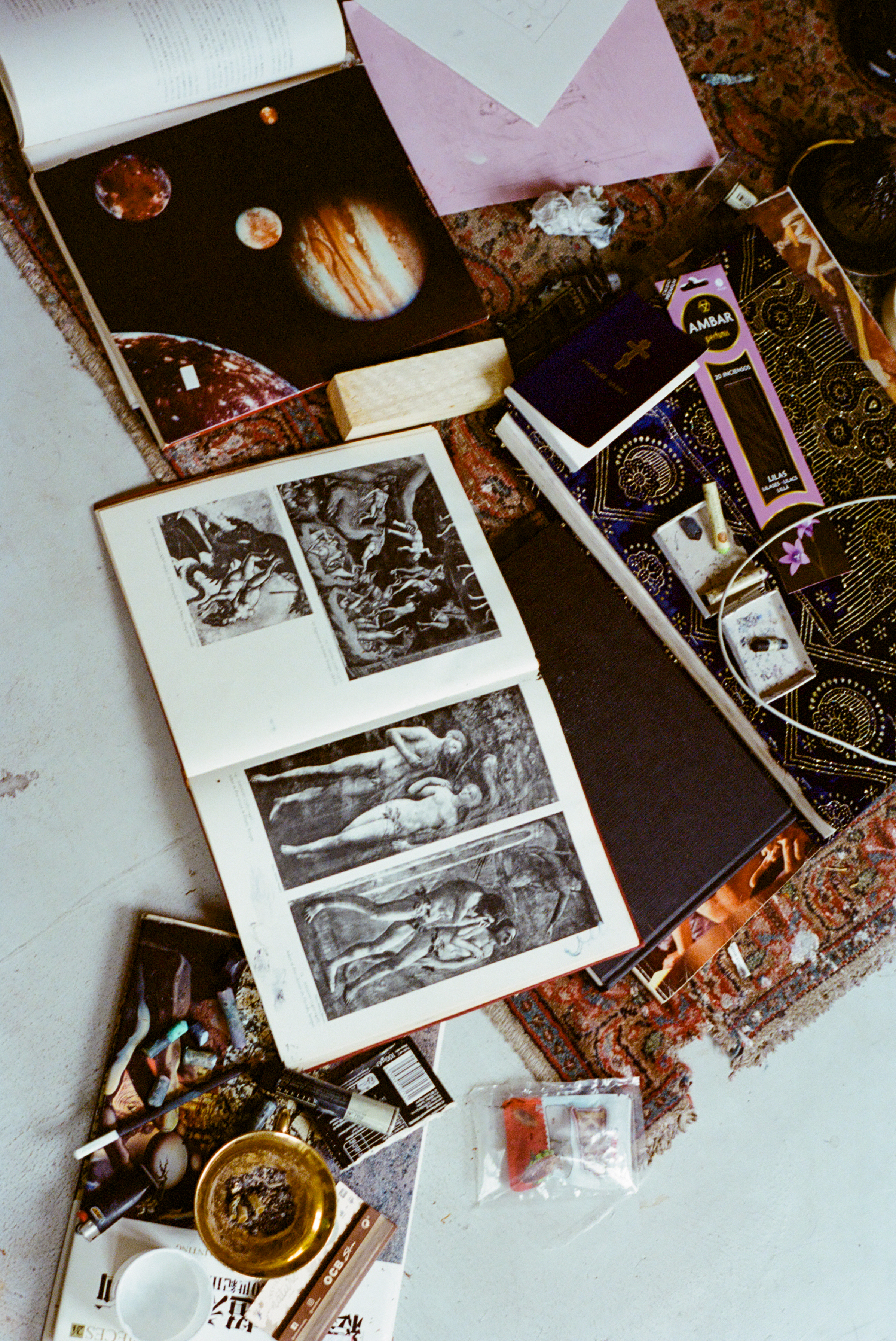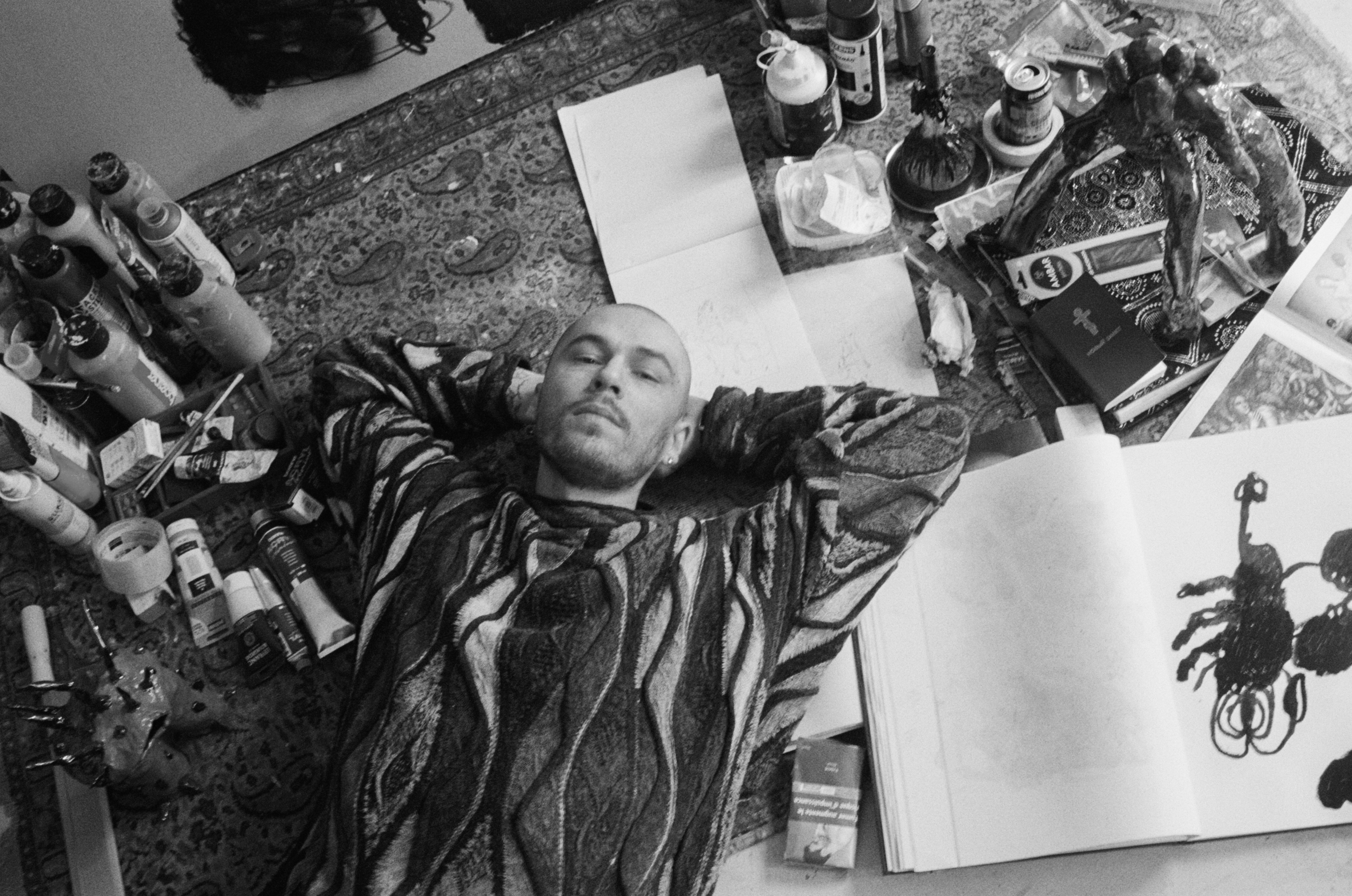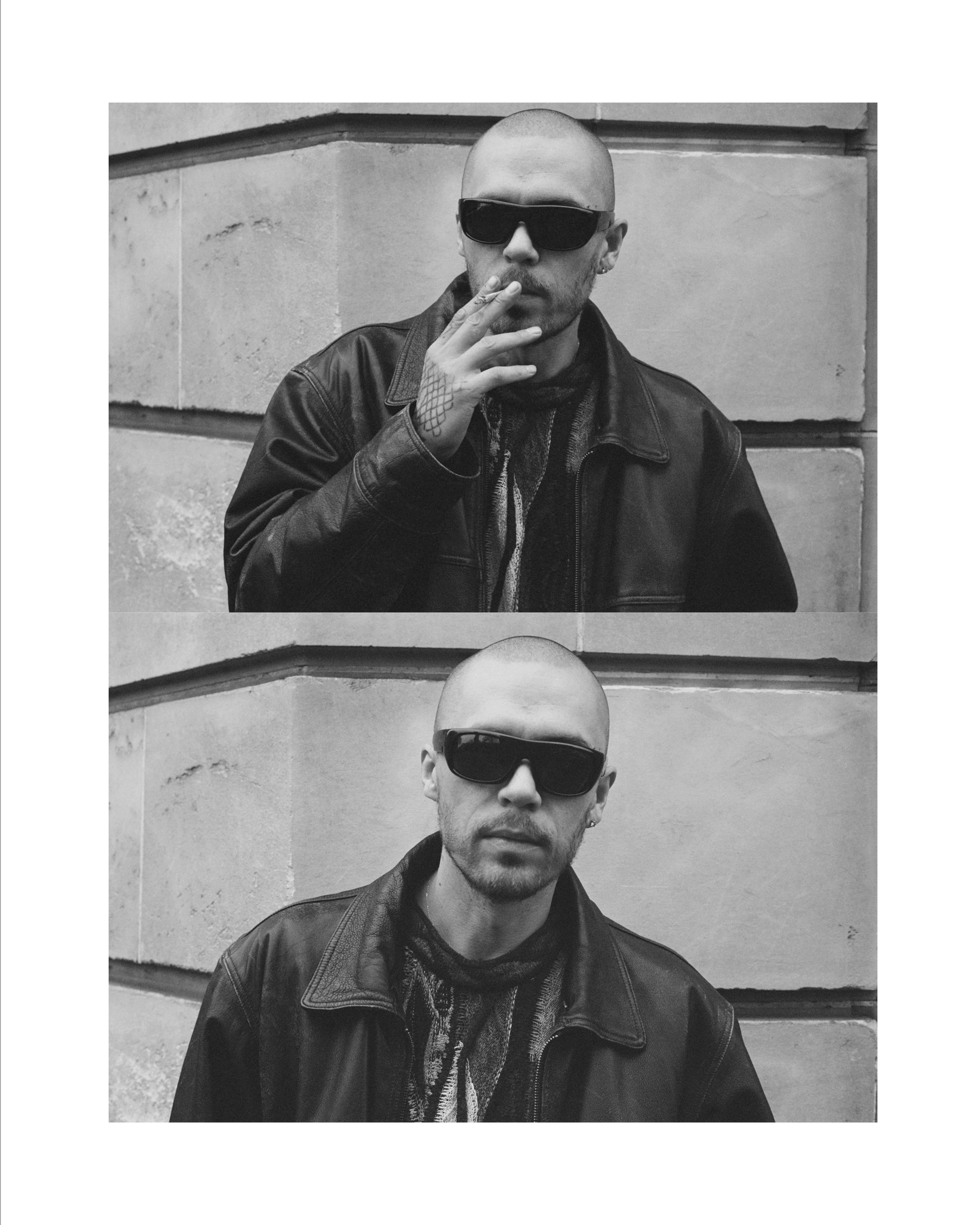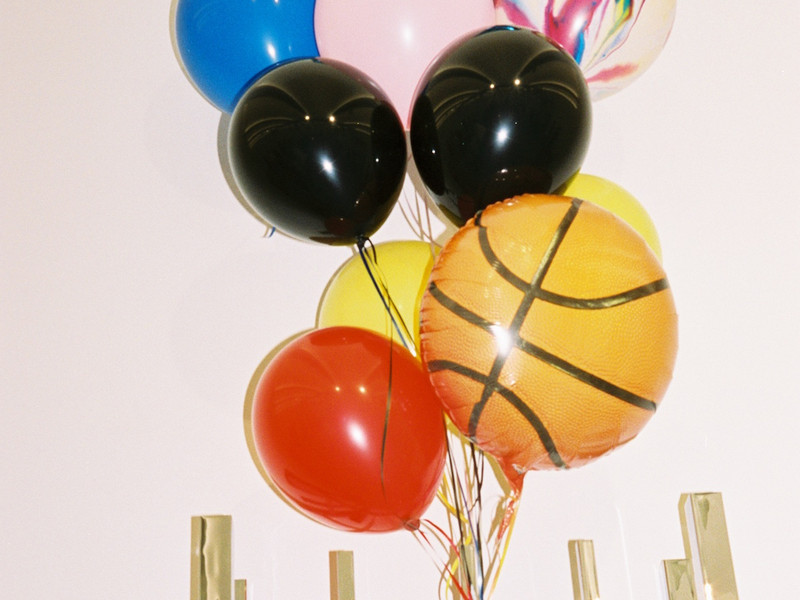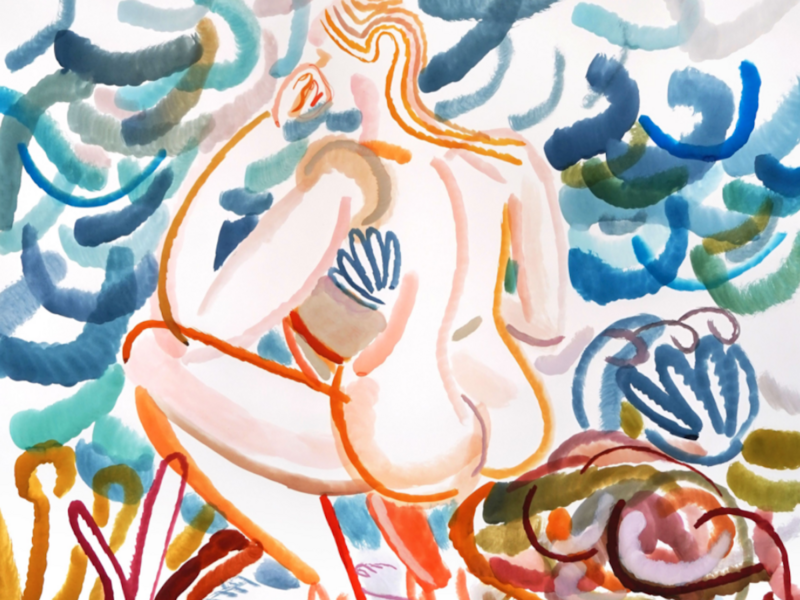For Us, By Julian Adon Alexander
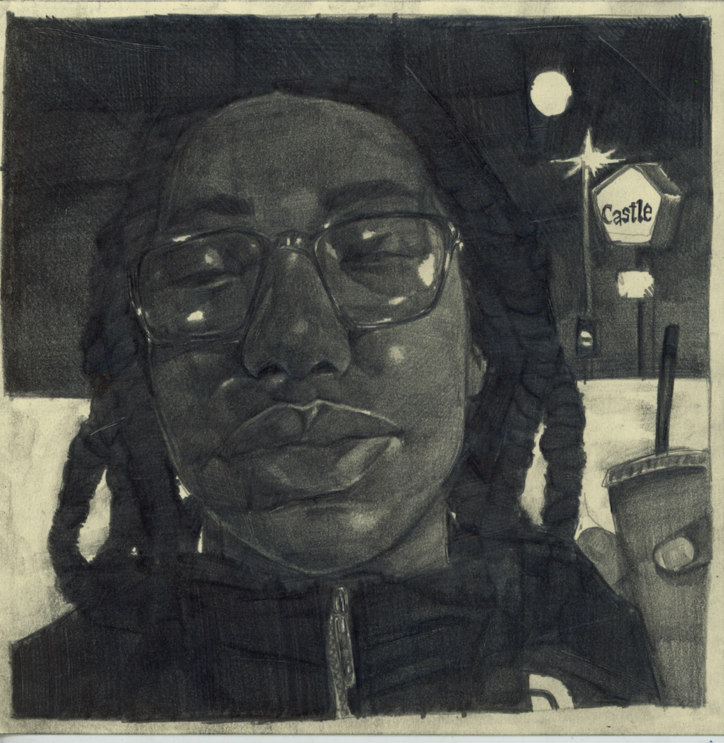
His artwork is lush in feel, exemplifying the seasons we throw away the most and the identities of Black people that have lived in the shadows. This artist uses occurring themes of winter as a projection into not just his self-portraits but of portraits of Black life. Canvasses are hydrated in emotion and realistic drawings that sit a mirror in front of its mirrors. It tells the viewers to no longer hide from themselves. When I looked at Alexander’s work, I was instantly mesmerized, and that can feel like a cliche statement, but it’s my only truth. His work left me blank in awe that it took me three weeks to write what I felt. And there is much to say.
Art is such a peculiar arrow of media because many artists don’t receive that bone of appreciation until their work presents as iconic. After all, it’s posthumous. It’s sitting between the past and the present. Julian deserves to be loved now. His voice lurks through graphite and acrylic, and the stories told in his work display a talent to be observed boldly in museums while also clutched physically from a loose sheet of sketchbook paper. Alexander’s Connecticut and New York backgrounds have molded a connection to Black people in the most authentic ways. I see myself. I see my siblings. I see the people on Jamaica Avenue or those coming off the four train at Crown Heights. I see the truth of Black life and respect that isn’t optional for our culture; it’s mandatory.
For office, we sat down with Alexander, discussing his artistic process and the love he has for art.
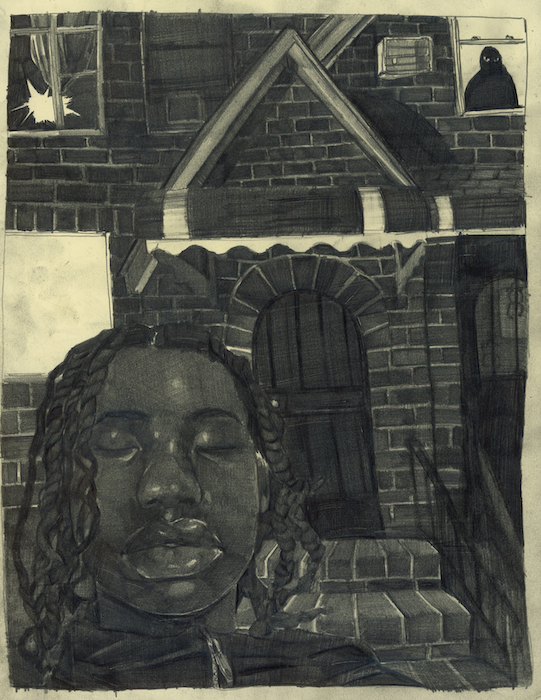

Most of your work centers around black and white imagery — what is the purpose of eliminating color?
The black and white was just personal and true to me. I used to paint more, but I think that was mostly based on expectation of what's popular in art. To be honest though, a lot of my favorite artists are pen and ink comic book and manga artists, so I was always familiar with that visual language. I also felt like painting was such a complicated process compared to how automatic drawing is. I can put down a mark and it's just there, exactly how I drew it. Paint complicates that. The drawings became kind of like my journal because they were just raw expression without any medium getting in the way.
To expand on that question, your work that does include color is distributed through the usage of acrylic. Which style— graphite or acrylic— do you like working with the most?
I think I got to a point with acrylic painting where I'm confident and I can do it, but I have a hard time justifiying why I should sometimes. I used to paint the same subjects I would draw. Now that I'm trusting my gut and trying to really master drawing, I realize that when I paint it has to be different from the drawings but equally as good. I have a couple of experiments, but they're still developing and they're more abstract than the drawings are. To answer your question though, I absolutely prefer drawing because it's the most accurate way I can express what's going on in my head.
When did you begin drawing? When did it shift into something you could do career-wise?
I've been drawing forever, and I feel like people always told me I was good at it. It was kind og like a party trick though as a kid, but I used to really want to be a writer. I would get notebooks and fill them up with stories. I thought I was going to write the next Lord of the Rings or something. This was all back in Connecticut. When I was in the sixth grade, I moved to Brooklyn and that's when I saw art as a viable career. In New York, kids go to specialized high schools, so I decided to audition and submit a portfolio if I wanted to go to an art school. This conditioned me to start taking art really seriously from the time I was maybe thirteen years old. The original plan was to be a comic book artist, but at some point I realized that I fumble too much with words, and I kind of felt like they were unnecessary. All I needed was an image to tell a story. I just turned twenty-four and somehow I'm still doing it.
How do you use portraits of Black people as a descriptor for your artistry? How do you vocalize Black life in your work?
I grew up in Bloomfield, Conneticut. It's a small, mostly Black town right outside of Hartford, which is a slightly bigger, mostly Black city. Most of my early childhood memories are in that setting. I remember that I never really thought about race in a meaningful way as a child because it seemed like my community understood each other on that level. When I moved to Brooklyn, I started going to school with all types of ethnic neighborhoods. That's where I started having experiences that would make me think about Blackness differently.
I experienced racism in the form of outright aggression, and I learned how to identify micro-aggressions. I learned to code-switch, but that became exhausting. In my art, we can just be ourselves. There is no person waiting for us to do or say something on the behalf of an entire race of people, we can safely nd honestly experience the full spectrum of human emotion. We're happy, we're sad, we're angry, we fall in love, we fall out of love. Being a representative for an entire culture is a weight that no one should bear, so in my drawings, noone is bearing that weight at all. They're depicted in the midst of a particular moment and the viewer is present with them in that feeling. I'm creating a safe space for Black people in any way we choose to expressourselves, without expectation. We don't always get that grace.
